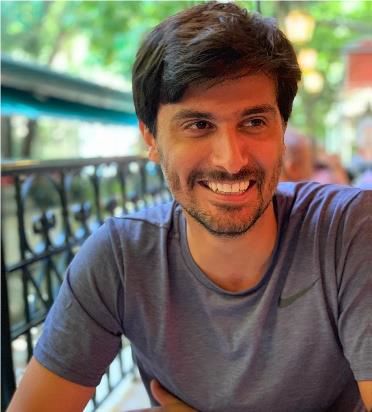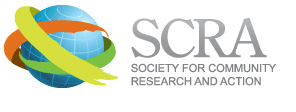by Olya Glantsman and Mayra Guerero, DePaul University
Original posted in The Community Psychologist (TCP) Volume 53 (1). Winter 2020
For the last eight years, Ramy has worked with several local and international non-profit organizations focused on community empowerment and peace building through strategic planning and action. Four months ago, Ramy began his new job in Lebanon at Search for Common Ground, an international organization that focuses on peace building by bringing different groups of people in conflict to work towards a unified solution. To meet this goal, Ramy’s project focuses on three things: conflict and power dynamics analysis, strategic communication, and community-led initiatives and dialogue. Through the conflict and power dynamics analysis, the project aims to better understand the situation and tension between communities in Lebanon and see where it’s most likely to make a change. Through the strategic communication initiatives, the focus is on utilizing different forms of media (e.g., film, radio programs, music videos) to spread awareness of issues and elicit discussions about overcoming differences. Lastly, through community-led initiatives and dialogue, the project identifies community influencers, referred to as champions, and trains them in conflict resolution and dialogue facilitation, and funds them to implement initiatives in their communities.
As mentioned, through his work, Ramy helps conduct a conflict analysis to identify problems across different groups of people in Lebanon. The second step is to identify key influencers in each community. These key influencers or what they call “champions,” are members of a community who do active work. They are identified through focus groups and interviews. After the champions are selected, they are trained in skills such as conflict resolution, peacebuilding, and facilitation as well as in communication, like storytelling narratives, and things related to the media. Other sessions may focus on topics such as economics, prejudice, community organizing, or working with individuals with various backgrounds. The two objectives are for the champions to become competent in activities that will bring about positive change to their communities and to share their narratives via the strategic communication media campaign.
The project uses a participatory approach to plan and design 10 dialogue sessions and community-led initiatives and the champions are partnered with coaches to mentor and support them throughout the process. They discuss the challenges that they are facing and possible ways to overcome them. In the process, the champions learn the necessary skills to manage and implement a project in their communities. For example, the champions are trained to write a proposal for a mini-grant of $1,000-$2,000 to fund their community-led initiatives and to report and monitor their progress. The long-term goal is for the trainees to acquire community organizing and development skills and be able to successfully work with nonprofits or in community.
At the same time, the champions help the organization identify focal points, individuals, and groups of people, such as those representing the local or national government or local nonprofits. Throughout the year, the champions then meet with people from the community to have dialogues about issues that they’ve been facing, whether it is about power dynamics, about economics, or any other situations that they and their community are going through. The meeting attendees are usually people with various social and economic backgrounds. This allows the participants to learn to work with diverse groups in a more productive and positive way while identifying potential issues of concern to the community members as well as possible solutions to these issues. The idea is that the organization will not continue doing the work, but rather the community members will take over in the future.
The other part of the project focuses on strategic communication. One part includes having videos and recordings of the work that champions are doing to share on new media and mass media campaigns such as billboards. One of the goals of this initiative is to create a more accepting perspective of multiple narratives. This is especially important in a country such a Lebanon with its multiple religious, ethnic, social, and economic groups. The point of this is to reduce tension and create collaborative kind of behavior that help reduce prejudice towards refugees, as well as other groups.
This is a crucial time to talk about these issues in light of the current political situation. The demonstrations that are happening have put a pause on some of the organization’s work to readjust the vision and to create a real justice strategy to match what’s happening in the country. So the organization is taking a step back and broaden the focus instead of focusing mainly on Syrian refugees and Lebanese host community. Thus, while their target still includes Syrian refugees, it also includes more inter and intra conflicts across the region. This means that the goal is a more positive narrative concerning Lebanon in general.
The Search for Common Ground does something called the common ground approach and its focus is on peacebuilding rather than on social justice and social change. This means that they need to always take a nonpartisan kind of approach to things and to be “neutral.” Their approach is different from those of human rights organizations. This process involves trying to work with both sides equally and learning more about the different perspectives.
While, Ramy thinks the work that his organization is doing is much needed, he wishes that they would expand to include a societal perspective such as looking at the resource distribution and power dynamics. Ramy reflects on the same limited approach in his previous work with Syrian and Lebanese youth. They would create a camp for one week. In it, the youth would have access to different kinds of instruments for arts such as music, theater, or film editing or drawing. Working with one another, the youth could see each other as human beings and potential friends. This helped break the barriers and reduce the prejudices that they may have originally had toward each other. Again, this was a great way to see the first-order change as the youth involved in this project had changed their own attitudes about the others they worked with. However, as a community psychologist, Ramy still wished his organization would get involved with a more national, transformational, second-order change. In his opinion, the organization is not dealing with power dynamics. It ignores the different kind of power between these two groups, Lebanese being much more powerful and experiencing many more privileges than their Syrian counterparts. To him, having Syrian and Lebanese youth who went to camps together become friends and collaborating with each other is fantastic. However, only a small percentage of the youth attend such camps. He does have hope that those who have gone through the art camps and the trainings will become the future leaders and help change the national discourse.
There is no denying that organizations such as those Ramy has worked with have a positive impact in the region. Community Psychology principles and tools are evident in Ramy’s work on peace promotion and conflict transformation in Lebanon. Perhaps one day, he will be able to use his training to create the kind of interventions that will bring long-lasting, transformational change to the region that he envisions.
Does this pique your interest? Learn more about Ramy Barhouche’s work in Lebanon here



